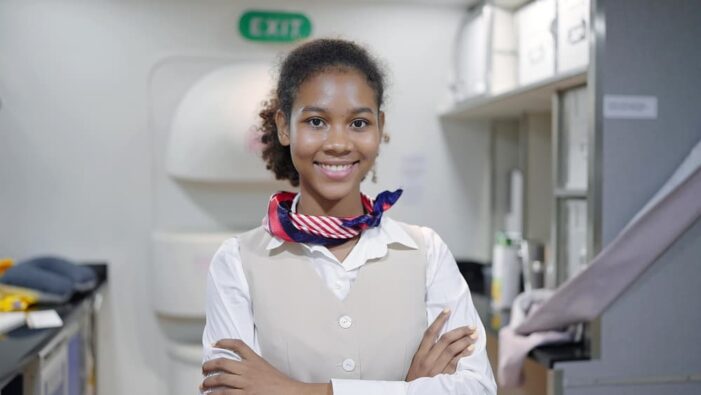By Linda Hohnholz | eturbonews
In the Beginning: 1920s-1930s
Did you know that in the beginning, most flight attendants, called stewardesses back then, were registered nurses? That’s why their uniforms reflected that type of attire. Their clothes were practical, conservative, and professional. The usual uniform was a skirt and blouse, most times with a cap of some sort and the shoes – sensible, of course.
War Weighs In: 1940s
The influence of World War II ushered in militaristic inspired uniforms with tailored suits. The skirts, jackets, and hats became more structured and were usually serious and dark in black or navy blue.
Ring in the Glam: 1950s
The end of the war brought a breath of fresh and glamourous air with elegant uniforms that were stylish and fun. The suits were fitted pencil skirts and the shoes were high heeled. Even gloves came along in happy bright colors with chic hats and even accessories.
Enter the Jet Age: 1960s
Adopting the modern trends of the jet age, uniforms began to become more futuristic. Designs were space ace themed with bold colored short skirts and pill box hats. This era also set the trend when fashion designers were called upon to create airline uniforms, such as Emilio Pucci who designed for Braniff International Airways.
I Gotta Be Me: 1970s
It is not surprising that the 70s brought about the desire for individuality, not that flight attendants could wear whatever they wanted. But their uniforms did reflect the change to more casual clothing that leaned towards comfort over style. This is when pantsuits made their debut quite often done in earth tones, which were very popular back then.
Conservative Corporate Style: 1980s
Nope, it wasn’t punk style that lorded over the 1980 uniform style, it was conservatism to the tune of the corporate world. Brand became ever more important in creating the polished image of a professional. Colors like black and navy reappeared with gray thrown in, back into skirts this time with blazers, scarves, and pumps.
We Are Diverse: 1990s
The airline industry finally began to embrace different body types as well as cultures, and it began to show in their uniforms. The materials became comfortable and practical, taking long hours and the changing of climates as one flew from one point on the globe to another.
Functionality of Well Being 2000s to today
Today, unforms have struck a balance between comfort and style, functionality and image. Fashion designers continue to be called upon to create clothing that reflects the airline’s brand, while paying homage to stretchy materials and comfy shoes. Often uniforms are layered to adjust to the diverse climate of air travel.
Much like the videos on social media of the history of dance, the history of airline uniforms is its own snapshot of history. If you could design the next flight attendant uniform, what would it look like?


